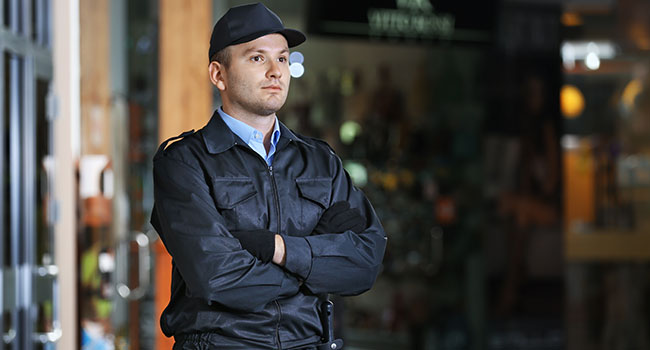
The Benefits of On-site Security
Video surveillance is not enough for a comprehensive security plan
- By David Weingot
- Apr 01, 2022
Global video surveillance has exploded in the past few years. In fact, the market is expected to reach a value of more than $90 billion by 2026. Due to enormous strides, remote monitoring technology has made over the past decade, businesses now have a simple and cost-effective way to watch their facilities from afar. Digital security firms can even plug directly into a company’s CCTV, and monitor 24 hours a day, seven days a week.
However, video surveillance is not enough for those looking to create a comprehensive security strategy for their business. All organizations experience physical threats, and human guards prevent, diffuse and minimize these risks. They ensure a company’s assets, staff and visitors are protected and manage emergencies caused by natural events, such as fires, power outages, or floods, as well as criminal activity such as theft, vandalism or terrorism.
One study outlined a six-month experiment that a transit system conducted, showing an increase in patrol visits and security guards that led to a 16% reduction in victim-generated crimes and a 49% increase in police-generated detections at the target locations. It concluded that, “Security guards, who are dynamic actors of social control mechanisms, deter offenders. They prevent crime but also increase detection of new crimes.”
Who Needs Human Security Services?
Nearly every industry can benefit from having on-site security services. Industrial facilities, hospitals, school campuses, residential communities, concerts, religious institutions, retail stores–the list goes on. The key is in deciding what type of services a facility would benefit from most – armed guards, unarmed guards, foot patrols, loss prevention specialists, concierge service, or all of the above.
To use an example, ports are one of the industries in need of security services. Congested container yards on the West Coast have made ports a target for burglaries, and in the third quarter of 2021 alone, more than $5 million worth of goods were reported stolen in “supply-chain thefts.” By using a mix of on-site patrols and remote monitoring services, private security partners can help ports identify weak spots and mitigate risks. They can secure shipping containers, account for access control, and understand how to overcome the area’s practical infrastructure limitations.
Security Guards vs. Remote Monitoring
While remote monitoring technology has made enormous strides over the past few years, there is no substitution for boots on the ground intelligence. Having easy mobility in an emergency situation is imperative, and a visible security presence can help deter crime.
Video surveillance, on the other hand, is stationary and requires a person monitoring at all times. If criminal activity is detected via video surveillance, no action can be taken to diffuse the situation other than calling law enforcement. Usually this delayed response results in the perpetrator completing their actions and fleeing before help arrives.
When video surveillance is used in tandem with on-site officers, the technology can serve as a force multiplier, allowing safety professionals to have eyes and ears throughout the premises. As off-site staff monitor CCTV footage, they can alert the onsite security team about potentially dangerous situations while telling law enforcement about the unfolding scenario.
Using a mix of human guards and video monitoring services ensures that there are eyes on all areas, as well as the manpower to diffuse a situation.
Security Specialists are Trained Professionals
Another benefit of having on-site security guards is the peace of mind they offer businesses and facility owners. Many security specialists are either former military or law enforcement professionals, and at minimum must receive a carry permit from their state of residency.
Once meeting the minimum requirements, security guards typically go through in-depth training that may include classroom training in state laws pertaining to use of force, how to respond to active threats, and understanding advanced combat techniques. Training should also consist of various stress levels, to manipulate the human body into overload, as to simulate an actual combat situation and allow the student to understand the ramifications of the sympathetic nervous system to the body. Armed guard training must also cover when to use less lethal options, such as baton and pepper spray, since all emergency situations are not qualified for lethal force.
For business owners, knowing that there is a trained professional securing the premises means feeling confident that your staff and company assets are safe.
It’s easy to think that a facility is secure simply because video cameras have been installed. However, this false sense of security can leave a facility at risk. For those trying to stop criminal activity in its tracks, remote monitoring is simply not enough. To truly secure an area, it takes a team of trained professionals, a detailed plan that accounts for all weaknesses, and, ideally, a mix of on-site patrolling and offsite monitoring.
As Sun Tzu said in The Art of War, “If your enemy is secure at all points, be prepared for him … Attack him where he is unprepared, appear where you are not expected.”
This article originally appeared in the April 2022 issue of Security Today.